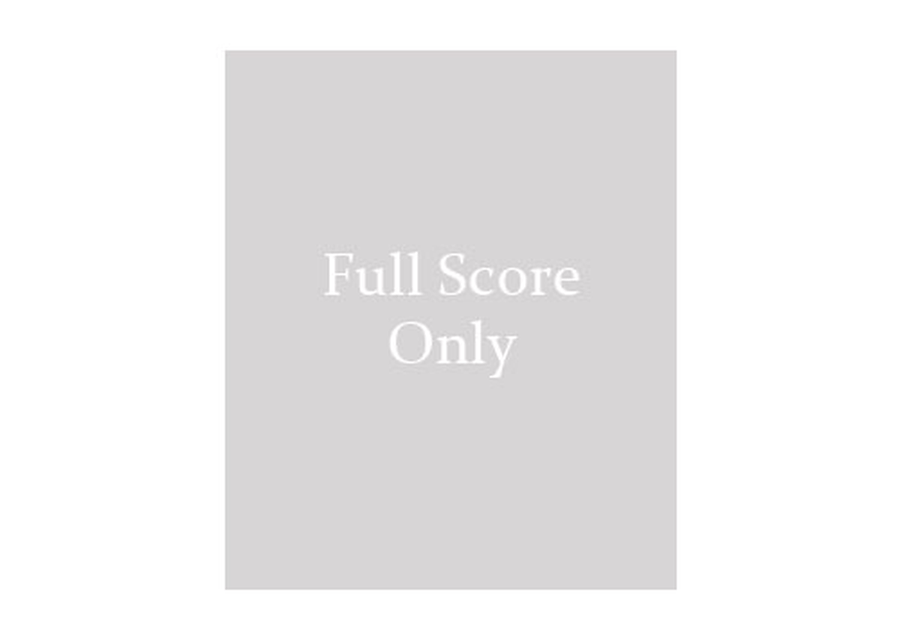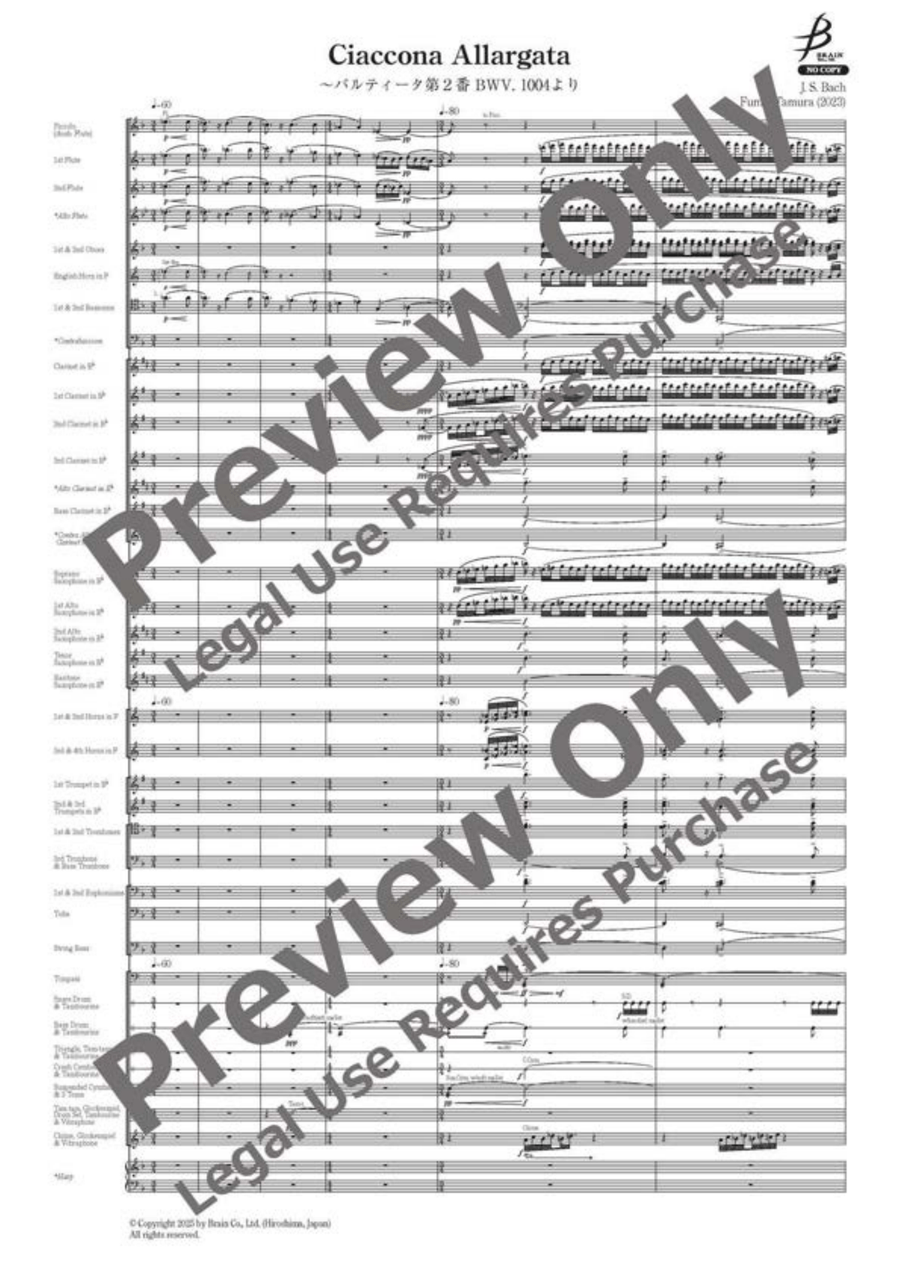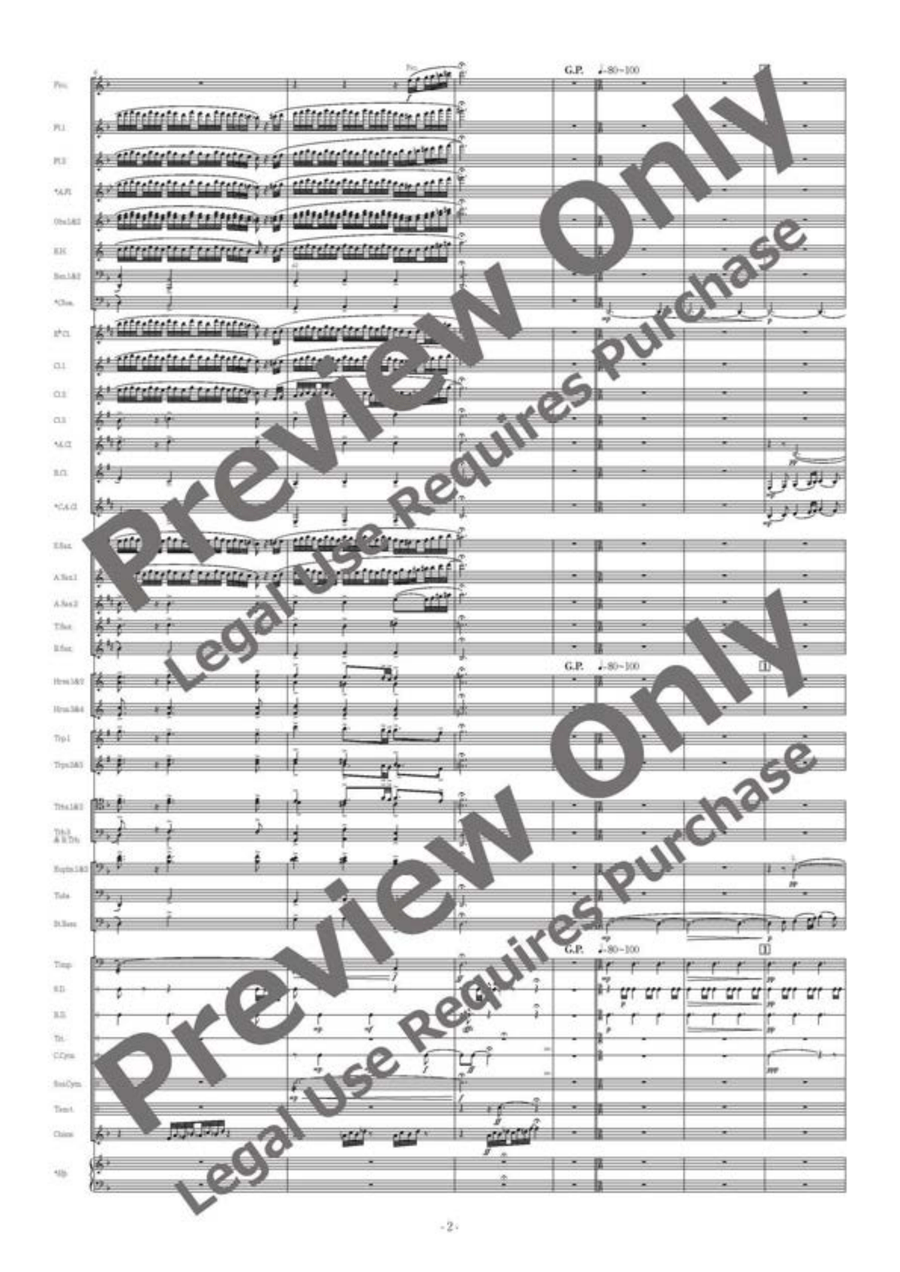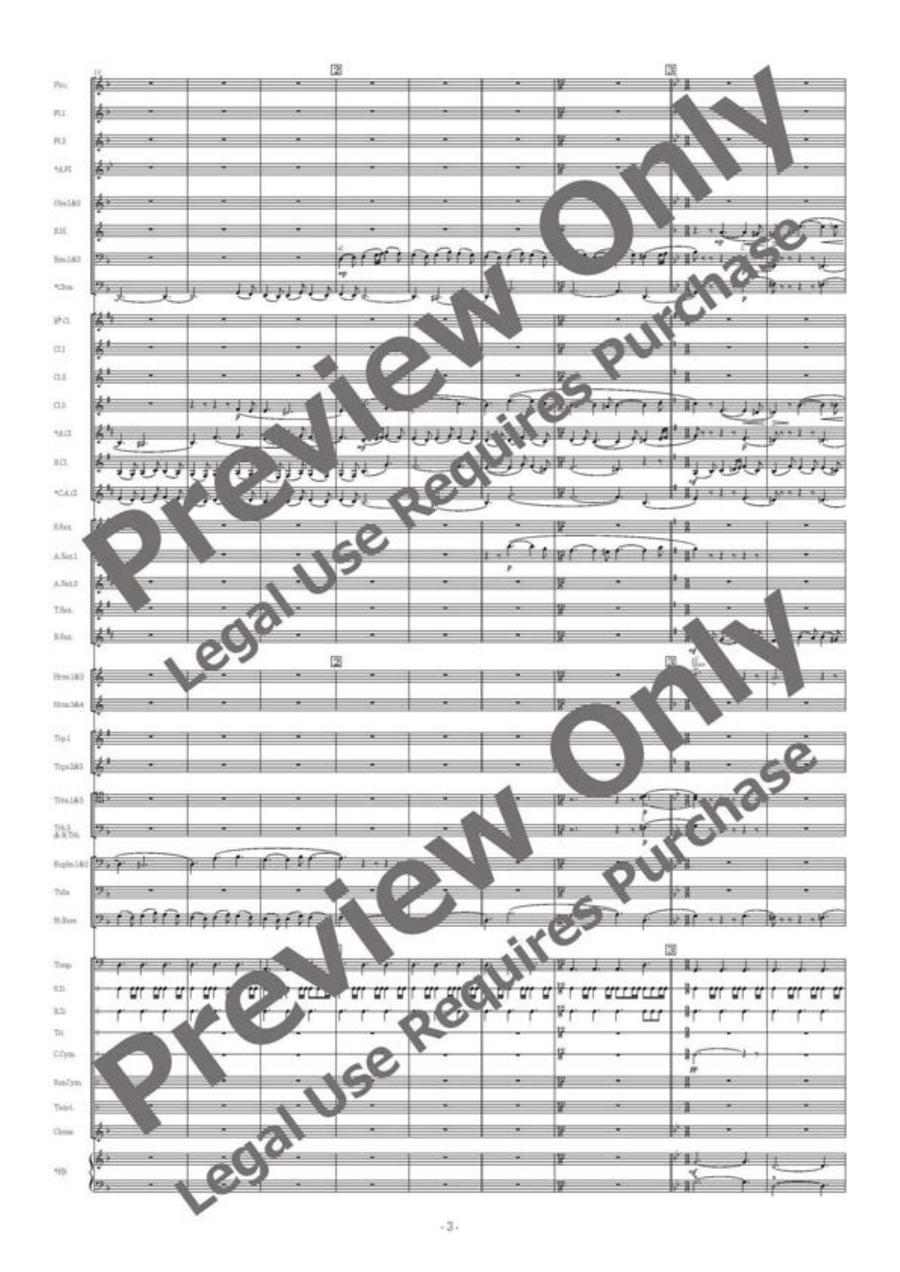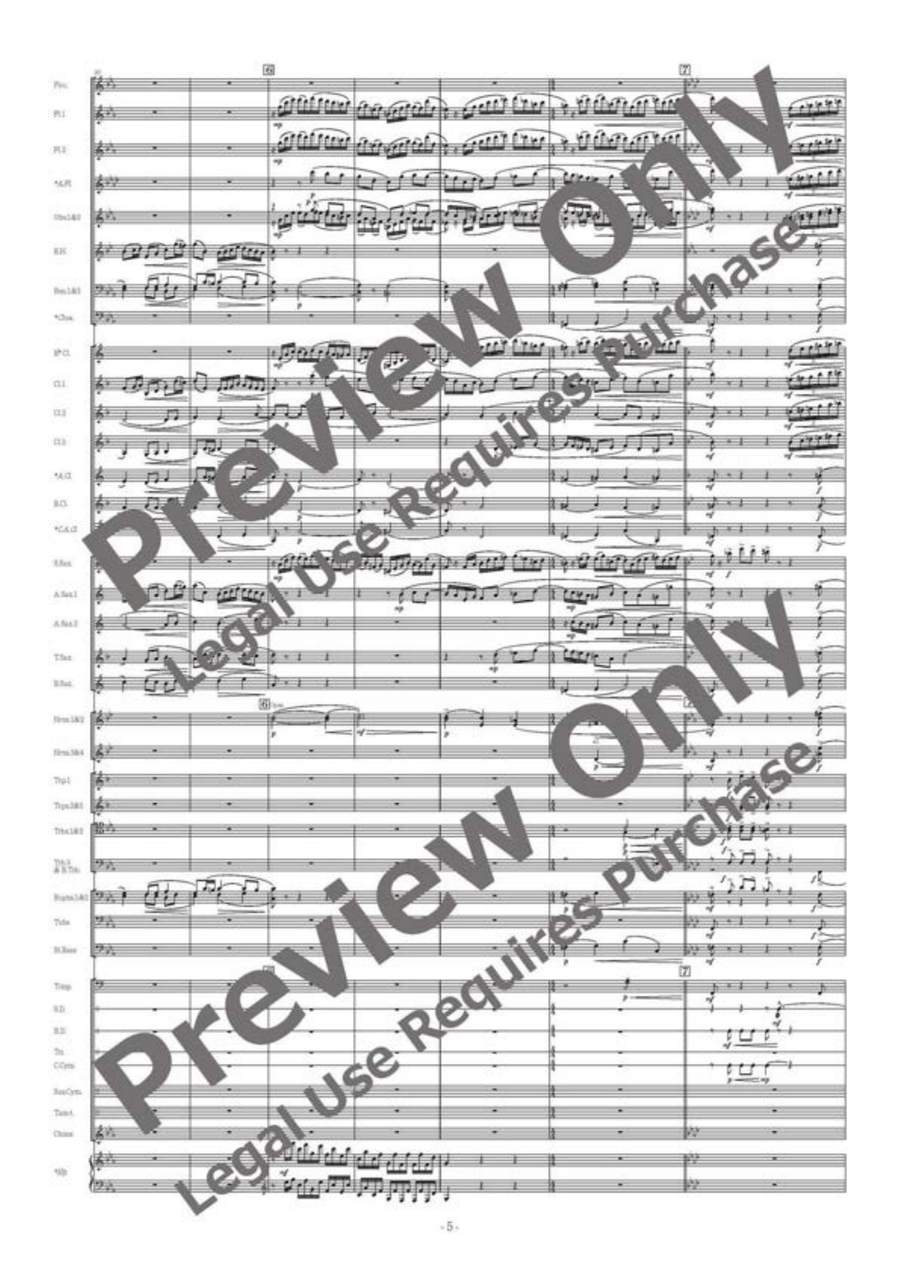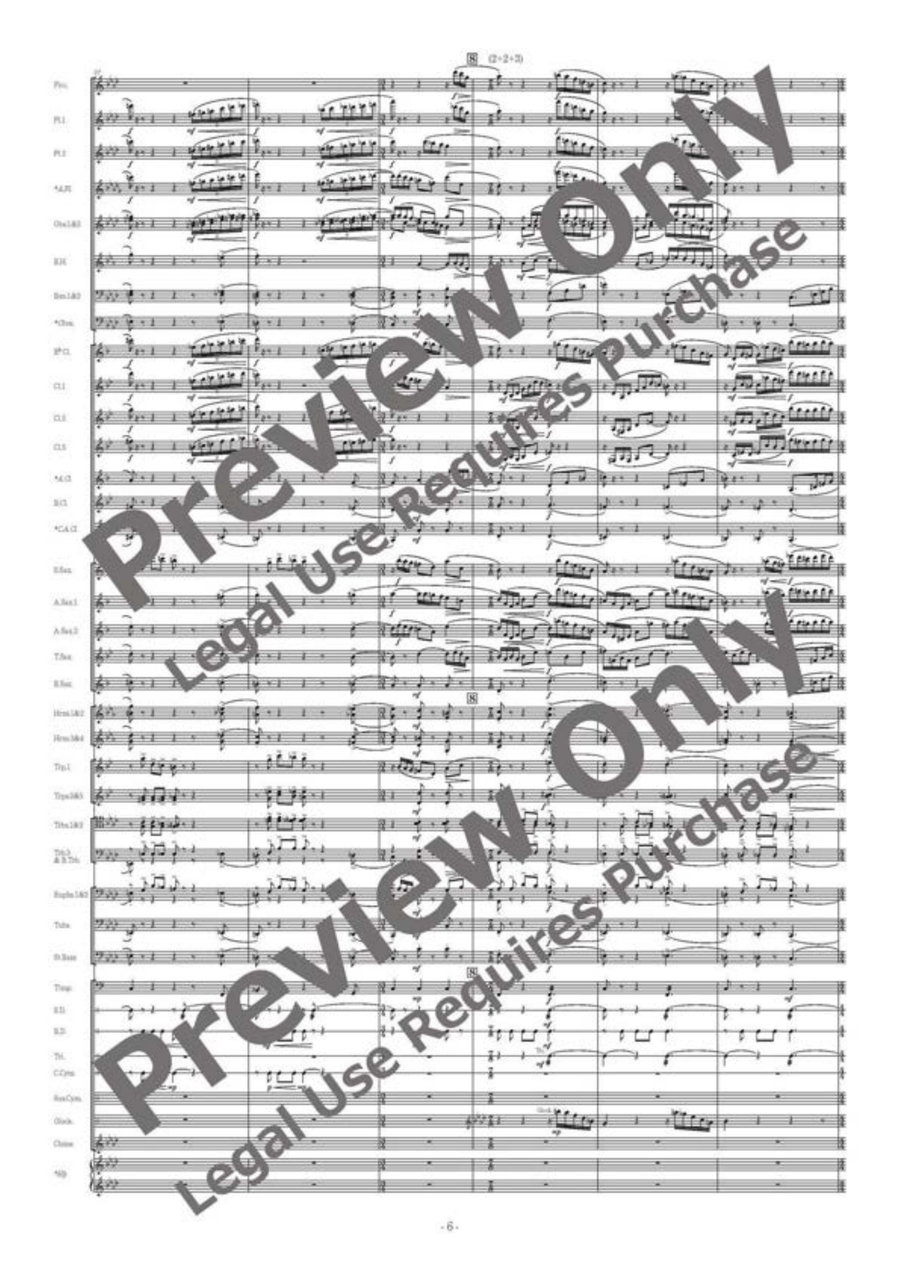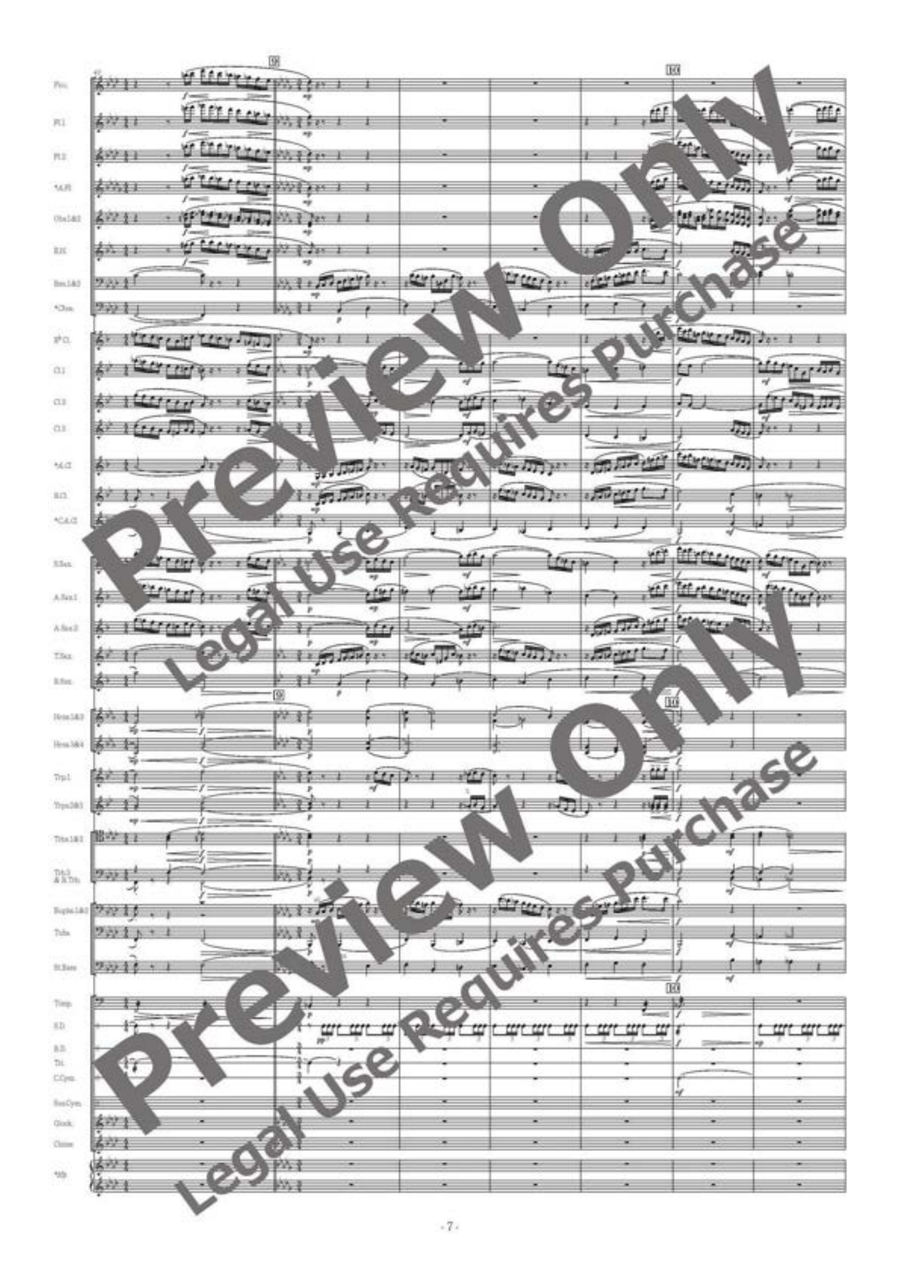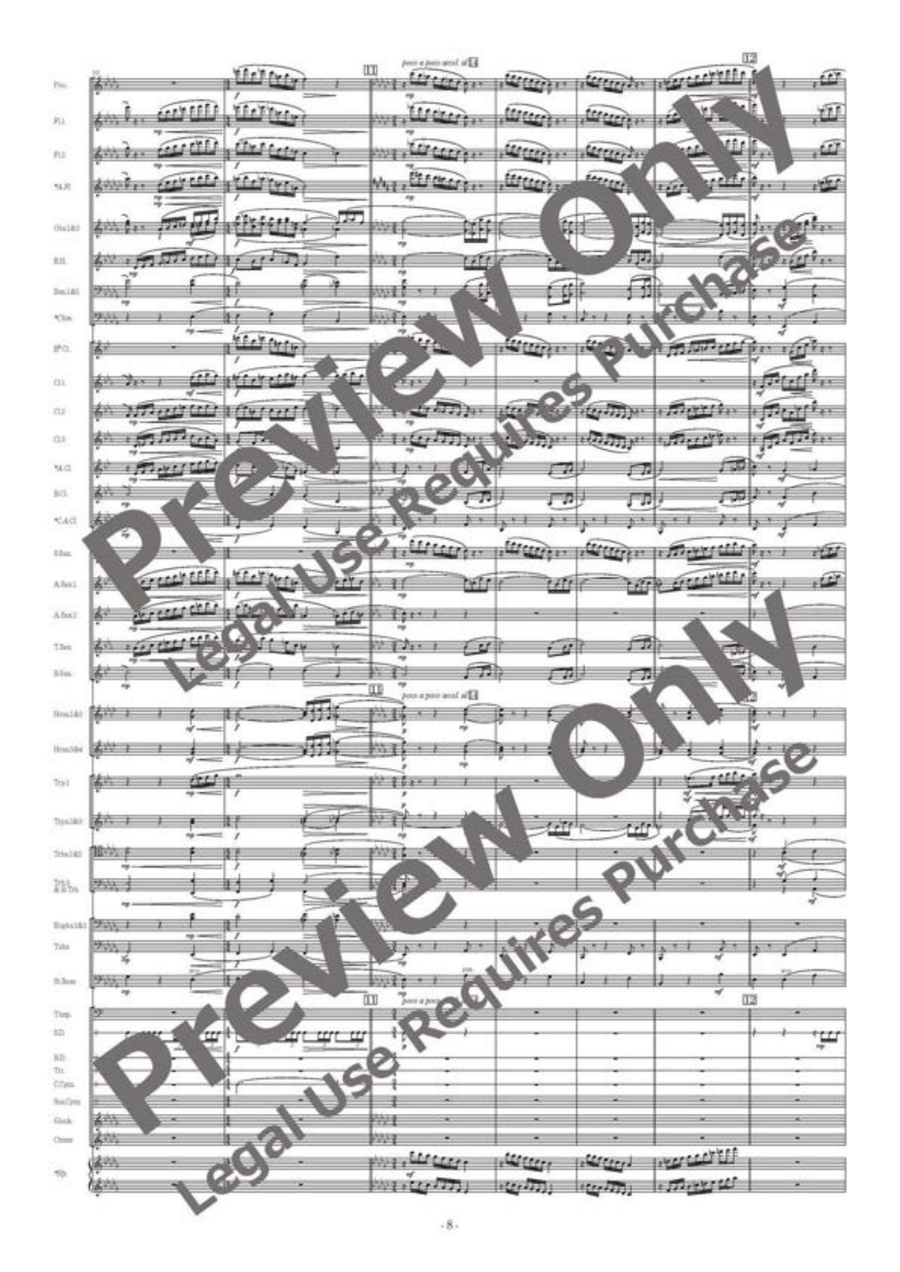Concert Band (Piccolo (doubling Flute), Flute 1, Flute 2, G Alto Flute (optional), Oboe 1/2, English Horn, Bassoon 1/2, Contrabassoon (optional), Eb Clarinet, Bb Clarinet 1, Bb Clarinet 2 (div.), Bb Clarinet 3 (div.), Eb Alto Clarinet (optional), Bb Bass Clarinet, Eb C) - Level 5.5
SKU: BZ.Z-YDAB-B08A
Composed by Johann Sebastian Bach. Arranged by Fumio Tamura. Concert & Festival. Score. Bravo Music #Z-YDAB-B08A. Published by Bravo Music (BZ.Z-YDAB-B08A).
This piece is an arrangement of the final movement, "Chaconne," from J.S. Bach's (1685-1750) five-
movement composition Partita No. 2 in D Minor for Solo Violin, BWV 1004.
The "Chaconne" is a kind of triplex for dance, widely composed during the Baroque era as variations based on
a repeated pattern (ostinato). In this work by Bach, a set four-bar phrase is repeated 32 times, with a variety of
transformations woven into a monumental composition spanning 257 measures-all for solo violin.
The title Ciaccona Allargata originates from two sources: Bach's choice of the Italian term "Ciaccona" for this
movement, as opposed to the commonly used "Chaconne," and the intent behind this arrangement, centered
around "expansion" (allargata in Italian). This expansion unfolds in the following major aspects:
1. Expansion of Key
In the original piece, the key remains anchored to D (D minor or D major). In this arrangement, however, the
variations progress through key changes, moving from D minor(oneb) to G minor, C minor, F minor, B-flat minor,
E-flat minor, and A-flat minor(sevenb) in the earlier stages. Such an unprecedented tonal development is not
found in compositions of Bach's time at all. However, this expansion in tonality contributes to the broader
musical character of the variations and enriches the orchestration. Nonetheless, D minor as the principal
key-and D major in the middle section-serves as a structural foundation throughout the piece.
2. Expansion of Time
In performance, music rarely adheres strictly to the mechanical precision of a metronome. The ebb and flow of
tempo are intrinsic to musical expression. Moreover, decorative variations in the melody often elongate certain
beats. These temporal flexibilities-both as interpretive expressions and as structural components-appear in
this arrangement as well. At times, the consistent triple time of the original work expands, morphing momentarily
into various irregular meters.
3. Expansion of Theme
The "BACH motif" (a musical sequence corresponding to B-flat, A, C, and B-natural) was famously used in the
final section of The Art of Fugue, Bach's unfinished masterpiece. Since Bach's time, numerous
composers-including Schumann, Liszt, Reger, Honegger, and Webern-have employed this motif as an
homage to the great master. In this arrangement, the ostinato theme of the original Chaconne and the
transposed BACH motif appear in tandem in the latter half of the work, unifying the piece as a whole.
Over the years, Bach's "Chaconne" has inspired a wide array of arrangements, from J. Raff's (1822-1882)
orchestral and piano versions to J. Brahms' (1833-1897) left-hand piano arrangement, F. Busoni's (1866-1924)
virtuosic piano transcription, and L. Stokowski's (1882-1977) orchestral version. The sheer variety of
interpretations underscores the creative spark this piece ignites in composers.
Against this rich backdrop of interpretations, I aimed to present a rendition for wind orchestra, naturally drawing
inspiration from many prior arrangements. Thus, this work can be seen as the latest "thread" in the historical
fabric of musical reinterpretations, tracing back to Bach's original-and itself influenced by violin works predating
Bach.
Over the past two decades, I have created wind orchestra arrangements of works associated with Bach,
including the prelude of his organ work Prelude and Fugue BWV 552 in E-flat Major, "St. Anne", Liszt's piano
and organ composition Fantasy and Fugue on the Theme B-A-C-H, and Reger's Fantasy and Fugue on the
Theme B-A-C-H for organ. This Ciaccona Allargata represents the culmination of these efforts.
Commissioned by Prof. Toshiyuki Ise (Osaka University of Arts)
Tsuruaoka Higashi High School Wind Orchestra
Ehime Prefectural Matsuyama Higashi High School Wind Orchestra
Hokkaido University of Education Super Winds
Saitama Prefectural Iwatsuki High School Wind Orchestra.
